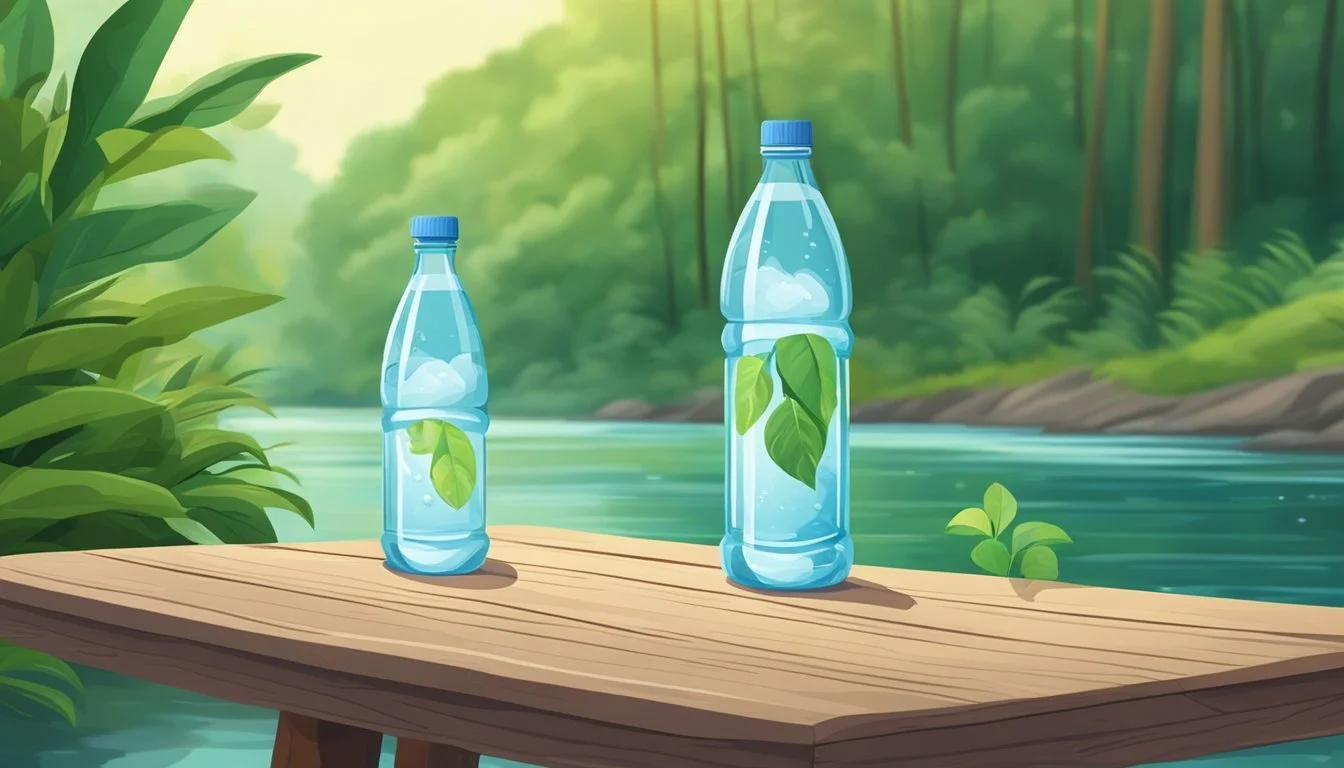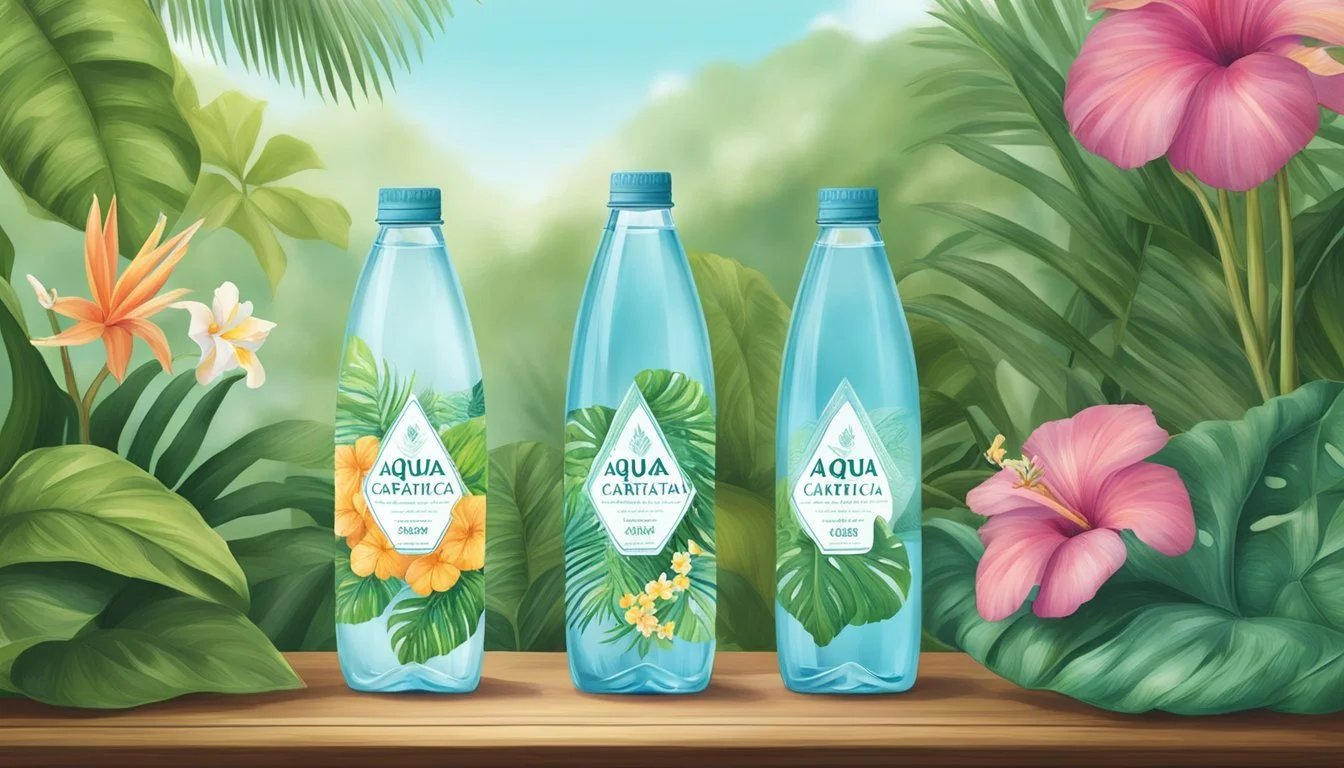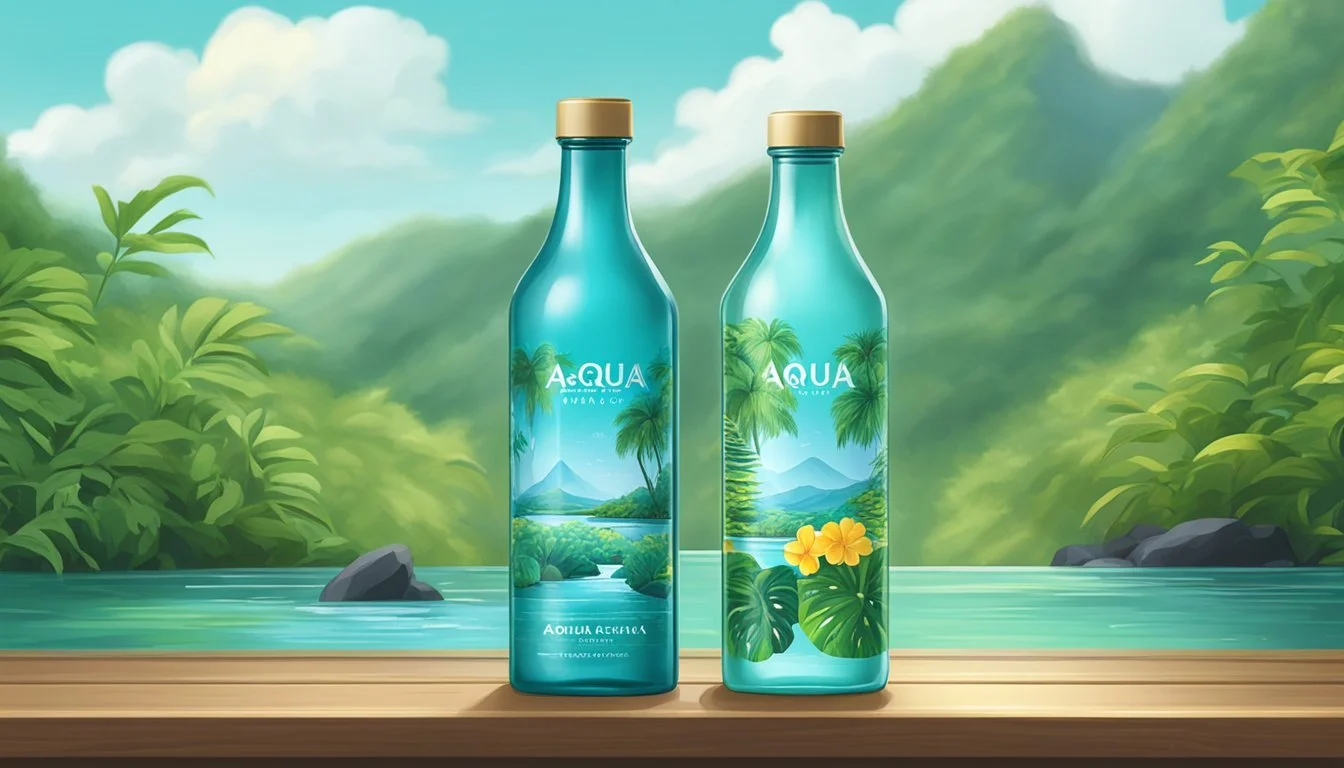Aqua Carpatica vs. Hawaiian Springs
Comparing Premium Bottled Waters
When it comes to choosing the best bottled water, Aqua Carpatica and Hawaiian Springs are two standout brands that often come into comparison. Aqua Carpatica, sourced from the Carpathian Mountains, boasts a naturally nitrate-free composition and a soft, mineral-rich profile that appeals to many health-conscious consumers. On the other hand, Hawaiian Springs water is sourced from the Kea’au aquifer on the Big Island of Hawaii and is praised for its clean, crisp taste and subtle sweetness.
Aqua Carpatica’s unique selling point is its pure, naturally occurring mineral content, which includes magnesium and calcium, making it not just refreshing but also beneficial for those looking for added health benefits. Hawaiian Springs, meanwhile, offers a distinctive taste experience, often described as smooth and naturally sweet, reflecting the pristine environment from which it is sourced.
For those prioritizing purity and mineral content, Aqua Carpatica may be the superior choice. Yet, for consumers who value a refreshingly clean and slightly sweet taste, Hawaiian Springs stands out as the better option. In this comparison, the decision ultimately hinges on individual preferences regarding taste and desired health benefits.
Origin and Source
The origin of the bottled water plays a crucial role in determining its quality, taste, and mineral composition. Both Aqua Carpatica and Hawaiian Springs have distinctive sources that contribute to their unique properties.
Aqua Carpatica: Carpathian Mountains
Aqua Carpatica originates from the pristine Carpathian Mountains in Romania. These ancient mountains are known for their unspoiled nature and extensive natural forests.
The water undergoes natural filtration through layers of volcanic rocks, which imparts it with a unique mineral profile. The Carpathian Mountains are renowned for their purity, which reflects in Aqua Carpatica's clean and crisp taste.
This spring water has low levels of sodium and nitrates, making it a healthy choice for hydration. Additionally, the brand emphasizes its commitment to preserving the natural environment of its source.
Hawaiian Springs: Tropical Aquifers
Hawaiian Springs water is sourced from tropical aquifers on the Big Island of Hawaii. These aquifers are located in one of the most secluded and ecologically rich areas of the world.
The water from Hawaiian Springs is naturally filtered through multiple layers of volcanic rocks, which enriches it with essential minerals and contributes to its smooth taste.
The tropical aquifers provide a constant and abundant supply of fresh water, creating a balanced and refreshing flavor profile. Hawaiian Springs also focuses on sustainable practices to protect the delicate ecosystem of its source.
Both sources offer distinct advantages, influenced by their geographical and geological characteristics.
Water Quality and Purity
Aqua Carpatica and Hawaiian Springs are two bottled water brands that emphasize their clean and fresh attributes. They claim to offer high-quality, natural mineral water with low contaminant levels.
Mineral Content Comparison
Aqua Carpatica prides itself on being nitrate-free. It contains a balanced mix of minerals and electrolytes, making it a suitable choice for those mindful of their mineral intake. The brand boasts calcium and magnesium levels that contribute to its smooth taste and health benefits.
Hawaiian Springs sources its water from deep Hawaiian aquifers. It has a slightly higher sodium content compared to Aqua Carpatica, but it remains within low levels. The water contains natural minerals such as calcium and magnesium, enhancing its overall taste and providing hydration benefits.
Contaminant and Chemical Levels
Aqua Carpatica is known for its stringent quality control. The water is nitrate-free and low in other contaminants, ensuring a pure drinking experience. They frequently test for heavy metals, ensuring their water remains safe and clean.
Hawaiian Springs also stresses its purity. The water is naturally filtered through volcanic rock, which helps in removing harmful chemicals and contaminants. It has low nitrate levels and is treated with UV light to ensure microbiological safety. This meticulous process results in clean, fresh-tasting water.
Both brands prioritize water quality and purity by maintaining rigorous testing and utilizing natural filtration methods.
Taste and Aftertaste
Aqua Carpatica and Hawaiian Springs are both known for their distinctive flavor profiles and aftertastes. This section will explore the nuances of each brand’s taste and the perceptions from experts and the general public.
Evaluating the Flavor Profile
Aqua Carpatica is highlighted for its pure, clean taste. Naturally nitrate-free and low in sodium, it offers a crisp and refreshing experience. The water is sourced from Romania's Carpathian Mountains, known for minimal human contamination, which preserves its natural taste.
Hawaiian Springs, sourced from Big Island’s Kea'au watershed, also prides itself on a clean, smooth taste. The volcanic filtration adds a slight mineral complexity, providing a subtly sweet and delicate flavor.
Both waters excel in providing a refreshing taste, yet Aqua Carpatica's purity might appeal to those avoiding any detectable mineral note. On the other hand, the mild mineral presence in Hawaiian Springs may be more appealing to consumers looking for a slightly richer taste experience.
Public and Expert Opinions
In taste tests, Aqua Carpatica often receives high marks for its clean, unadulterated flavor, setting it apart from many competitors. Reviews from sources like Olive Magazine praise its purity and lack of aftertaste, making it a favorite among purists.
Hawaiian Springs garners praise for its smooth and light texture. Experts and consumers alike appreciate its delicate sweetness, which is a result of its volcanic origins. This water’s mild aftertaste is often described as refreshing and satisfying, making it a preferred choice for those seeking a balanced mineral profile.
Public opinions frequently highlight Aqua Carpatica's ability to quench thirst without leaving any lingering flavors. Conversely, Hawaiian Springs' unique mineral notes are often cited as a pleasing aftertaste, offering a more distinctive water-drinking experience.
Environmental Impact and Sustainability
When evaluating the sustainability of Aqua Carpatica and Hawaiian Springs, key factors include their packaging materials and their management of water sources.
Comparative Analysis of Packaging
Aqua Carpatica uses 100% recyclable plastic and glass for their bottles. This choice aims to reduce environmental impact by encouraging recycling and lowering landfill waste.
Hawaiian Springs, on the other hand, also uses 100% recyclable plastic but less commonly utilizes glass. The use of glass by Aqua Carpatica might be seen as more environmentally friendly due to its lower carbon footprint during recycling. However, the transportation of heavier glass can increase carbon emissions compared to lighter plastic.
Both companies avoid using CFCs in their production processes, favoring sustainable practices. However, the broader availability and use of plastic by Hawaiian Springs might result in more plastic pollution, highlighting a need for improved waste management systems.
Water Source Management
Aqua Carpatica sources its water from naturally protected springs in the Carpathian Mountains. Their management practices aim to ensure that the water remains pure and that the extraction process does not harm the local ecosystem.
Hawaiian Springs also emphasizes the natural purity of their artesian water from Hawaii. They use methods to protect the groundwater recharge rates, ensuring sustainable withdrawal of water. Both companies focus on protecting their water sources, but Aqua Carpatica emphasizes stricter environmental controls and monitoring.
Effective water source management is crucial in preventing over-extraction and maintaining water quality, and both companies demonstrate a commitment to sustainable practices within this realm. This effort prevents potential long-term impacts on local ecosystems and ensures a continuous supply of clean water.
Health Benefits and Considerations
Both Aqua Carpatica and Hawaiian Springs offer unique health benefits, largely stemming from their mineral content and pH levels. Understanding these aspects can help consumers make informed decisions about which water is best suited for their health needs.
Alkalinity and pH Levels
Aqua Carpatica boasts a naturally alkaline pH level of about 7.8-8.2, which can help balance the body's acidity. Alkaline water is often praised for its potential to neutralize acid in the bloodstream and improve metabolism. Aqua Carpatica's alkalinity is derived from its natural bicarbonate content, providing a refreshing taste and potential health benefits such as improved digestion.
In contrast, Hawaiian Springs water maintains a natural pH level around 7.7, slightly lower than Aqua Carpatica but still within the alkaline range. The water’s pH is stabilized by its volcanic filtration process, which imparts unique minerals and a clean taste. Both brands promote a balanced pH that supports overall well-being and can be particularly beneficial for individuals with acidic dietary habits.
Hydration and Mineral Balance
Aqua Carpatica contains a harmonious blend of minerals, including calcium, magnesium, and potassium. These electrolytes play crucial roles in hydration, muscle function, and bone health. The water’s high mineral content offers a distinct taste that many people find appealing and can support sustained energy levels throughout the day.
Hawaiian Springs offers a slightly different mineral profile. While also rich in calcium and magnesium, the water features notable amounts of silica, which aids in skin health and joint function. The volcanic terrain from which the water is sourced contributes to its unique mineral makeup, providing a naturally refreshing hydration experience that supports the body’s various physiological processes.
Both Aqua Carpatica and Hawaiian Springs offer mineral-rich hydration options, each with their own unique benefits to suit different health and hydration needs.
Product Range and Varieties
Aqua Carpatica and Hawaiian Springs both offer diverse product ranges. Key differences lie in their still and sparkling water variants and their serving sizes, which cater to different preferences and needs.
Still vs Sparkling: Options Available
Aqua Carpatica offers both natural still mineral water and naturally sparkling mineral water. The still water is nitrate-free, making it a popular choice for those looking for purity. The sparkling variety maintains the same high-quality standards and is appreciated by those who prefer a fizzy alternative.
Hawaiian Springs focuses solely on natural still water. This water is sourced from artesian springs and boasts a naturally alkaline pH of 7.7+, which adds a unique taste profile. The absence of a sparkling variant might be a consideration for consumers who enjoy carbonated options.
Serving Size and Convenience
Aqua Carpatica comes in various bottle sizes to suit different needs. Common sizes include 500 mL and 750 mL, making it convenient for on-the-go hydration or larger servings. The pricing is competitive, with still water available for around 65p per 500mL and sparkling water slightly more expensive.
Hawaiian Springs also prioritizes convenience with its packaging. The water is bottled at the source in recyclable containers. Available primarily in standard sizes, these bottles are designed to be both attractive and practical, appealing to consumers who value sustainable packaging practices along with quality hydration.
Market Availability and Consumer Accessibility
In comparing Aqua Carpatica and Hawaiian Springs, examining their market reach and ease of purchase is critical. Below, we analyze their retail presence and online purchase options to provide a comprehensive view.
Retail Presence Analysis
Aqua Carpatica is widely available across various markets, notably in the UK through major retailers like Tesco and Ocado. With significant shelf space, it enjoys robust visibility in grocery stores and health-focused outlets.
Hawaiian Springs, on the other hand, has more limited retail availability, often found in select locations primarily in the United States. It is prevalent in specialty stores and organic markets but lacks the widespread distribution seen with Aqua Carpatica.
Online Purchase Options
Both brands offer convenient online purchase options. Aqua Carpatica is accessible via major online platforms including Amazon and its own website www.aquacarpatica.com. This allows for easy home delivery and bulk purchase options.
Hawaiian Springs also leverages online retail channels like Amazon, though it does not have the same extensive online presence as Aqua Carpatica. Consumers can buy directly from the company’s website, providing ease of accessibility for those preferring online shopping.
Comparative Price Analysis
When comparing Aqua Carpatica and Hawaiian Springs bottled water, examining the cost is essential.
Aqua Carpatica offers various sizes and price points. For instance:
500 mL Aqua Carpatica Spring Water costs around $0.92.
750 mL Aqua Carpatica Sparkling Water is priced at $2.29.
In the UK market, 500 mL still water is 65p, while sparkling water is 69p.
Hawaiian Springs bottled water is another player in the market. The cost structure generally reflects the premium nature associated with Hawaiian branding.
Standard 500 mL bottles of Hawaiian Springs are priced around $1.00.
Larger sizes, such as 1 L bottles, typically cost $1.75 to $2.00.
While Aqua Carpatica is sourced from the Carpathian Mountains in Romania, Hawaiian Springs comes from the Hawaiian Islands. This geographic difference influences shipping costs and final pricing.
Summary Table:
Brand Bottle Size Type Approx. Price Aqua Carpatica 500 mL Spring Water $0.92 Aqua Carpatica 750 mL Sparkling $2.29 Aqua Carpatica UK 500 mL Still Water 65p Aqua Carpatica UK 500 mL Sparkling 69p Hawaiian Springs 500 mL Still Water $1.00 Hawaiian Springs 1 L Still Water $1.75 - $2.00
Both brands position themselves in the premium market segment. Aqua Carpatica's range shows slightly lower prices per unit, which might appeal to cost-conscious consumers seeking premium quality.
Both brands cater to niche markets, and pricing is only one factor influencing consumer choice.
Final Verdict
When it comes to choosing between Aqua Carpatica and Hawaiian Springs, there are several factors that consumers should consider. Both brands offer unique advantages and potential drawbacks that may influence your decision.
Summarizing the Advantages
Aqua Carpatica stands out for its nitrate-free claim, which is an attractive feature for health-conscious consumers.
The water is reasonably priced, ensuring it remains accessible without compromising on quality. This pricing point aligns with brands like Flow and Castle Rock, which also emphasize purity and health benefits.
Hawaiian Springs, on the other hand, emphasizes its exceptional taste, often described as pure and clean with a pleasant balance of minerals. Additionally, it is sourced from Hawaiian aquifers, lending it an exotic appeal.
This positions it similarly to high-end brands like Fiji and Core Hydration, which are known for their premium quality and unique sources.
Key Takeaways for Consumers
Bottom Line: If purity and a reasonable price are primary concerns, Aqua Carpatica makes a compelling argument with its nitrate-free and affordable product offerings.
Taste and Source: For those who prioritize exceptional taste and the allure of exotic sourcing, Hawaiian Springs provides a unique experience that distinguishes it from other brands.
When making a decision, consider what factors matter most to you—whether it’s health benefits, taste, price, or the prestige associated with the water’s origin. Both Aqua Carpatica and Hawaiian Springs bring strong offerings to the table, leaving it to personal preference and individual priorities to guide the final choice.






